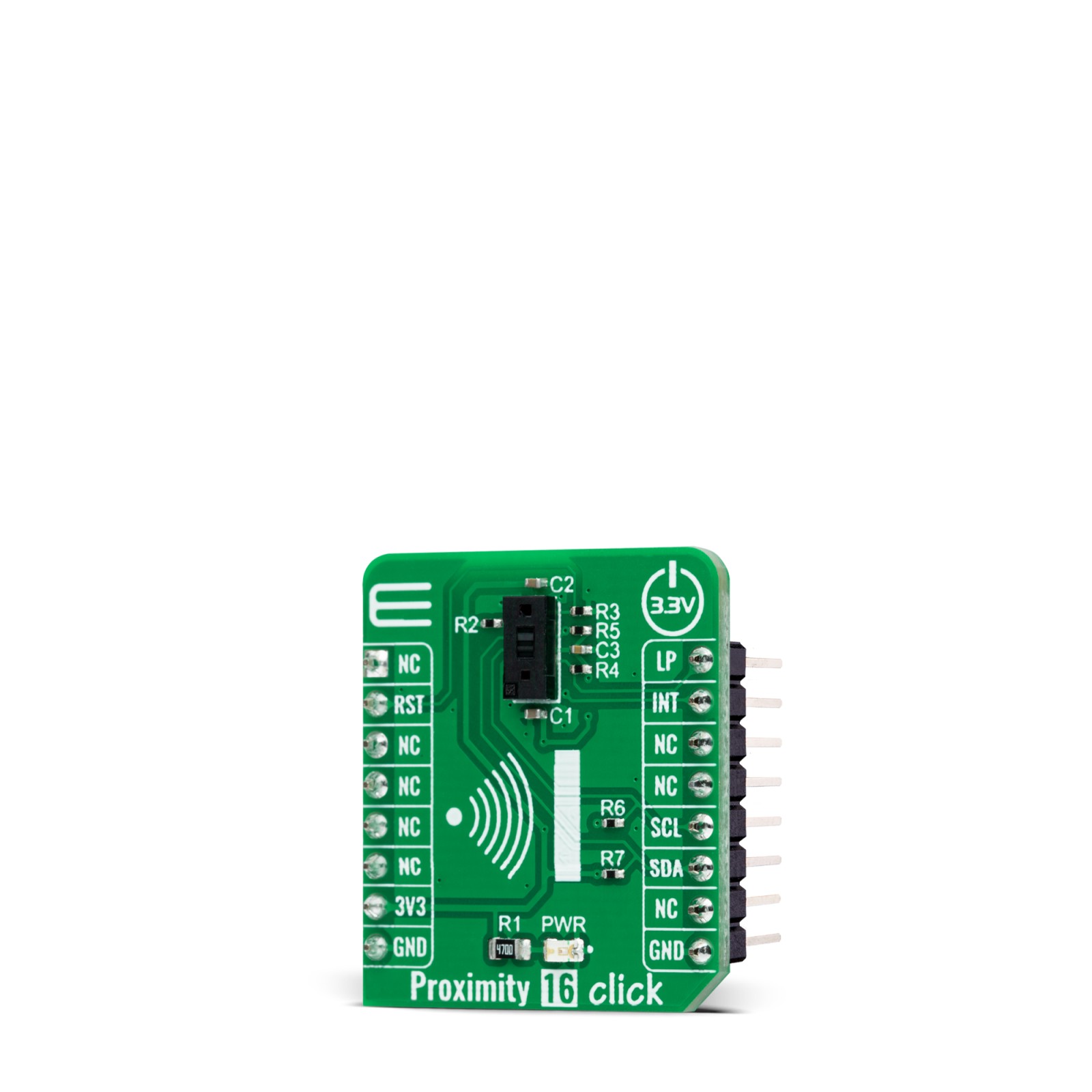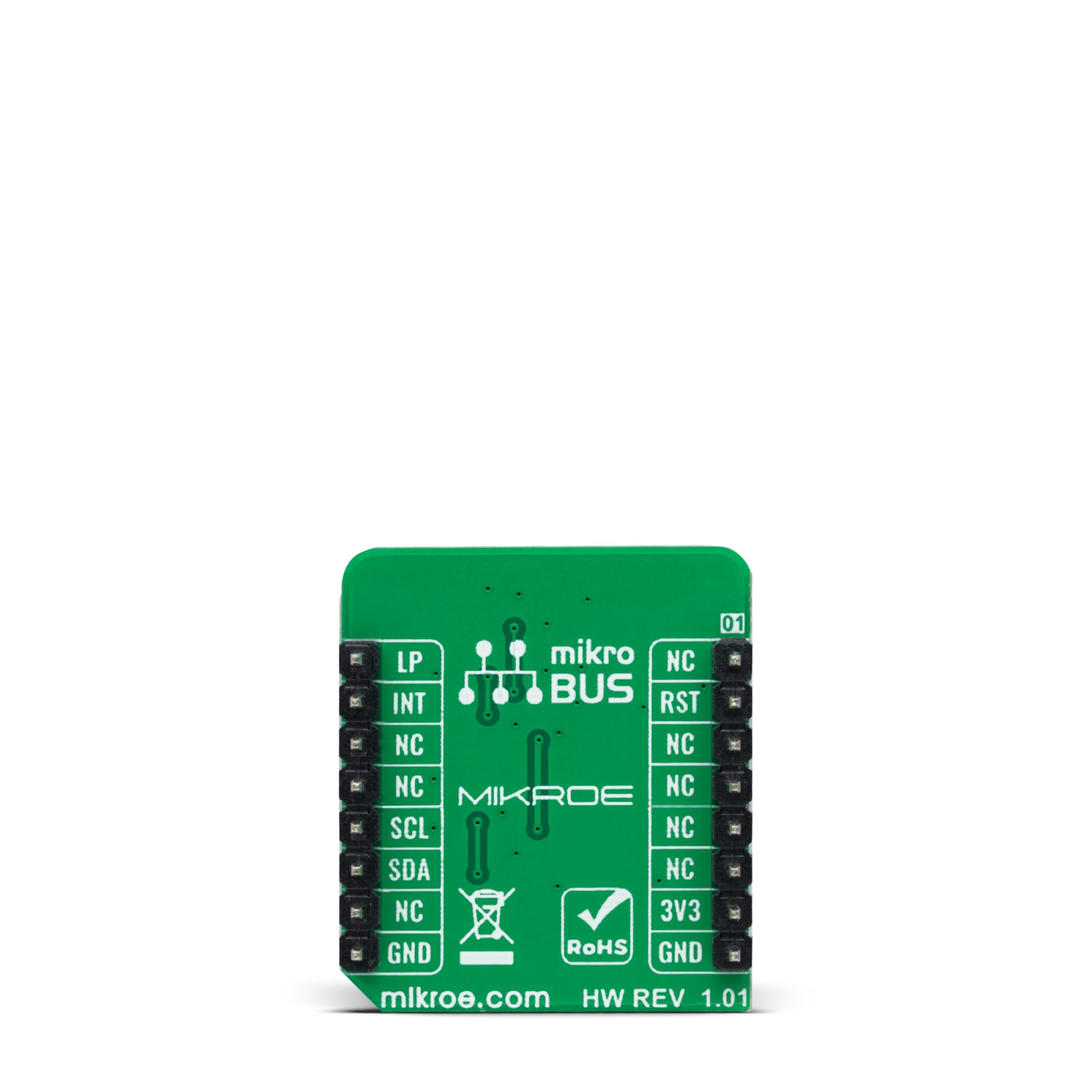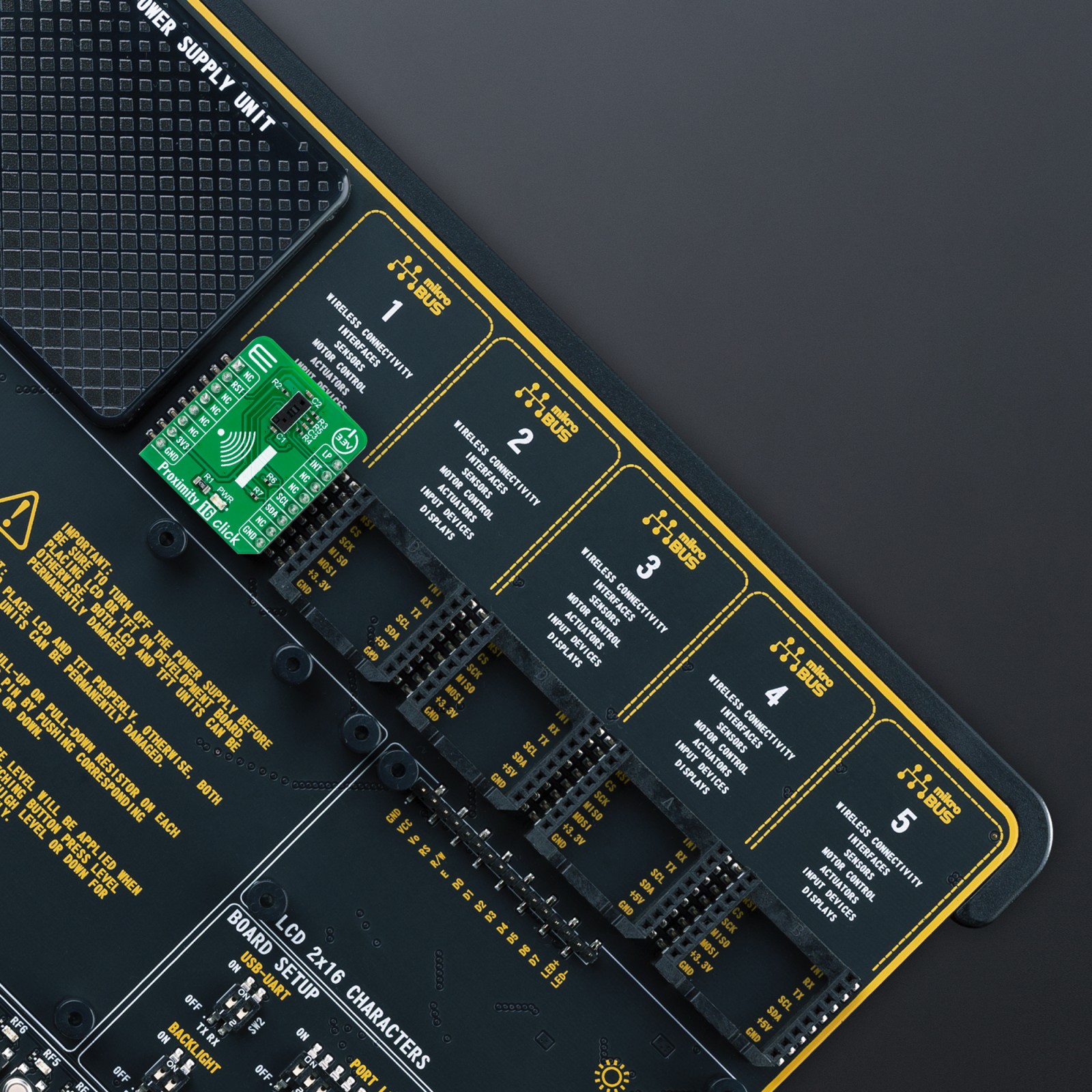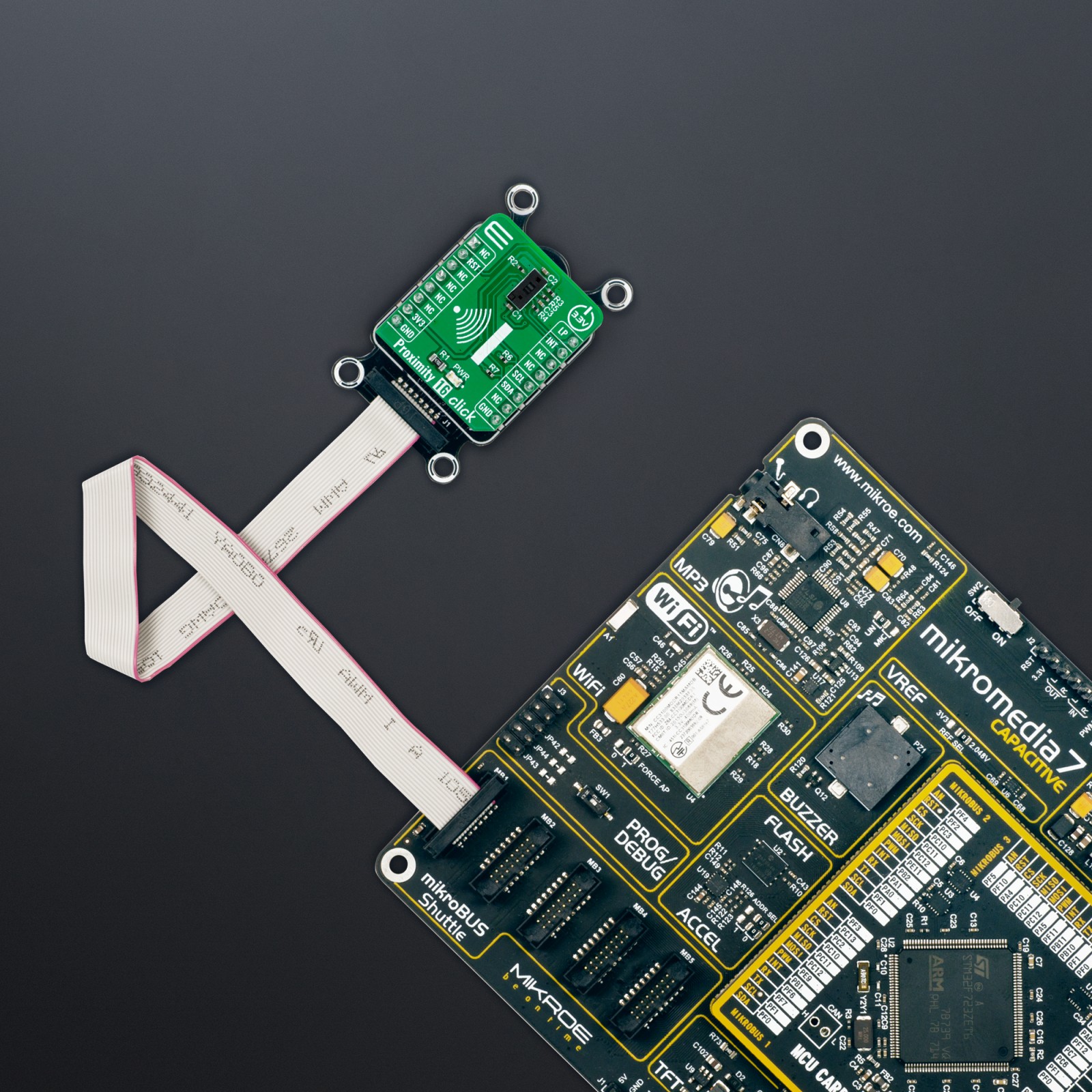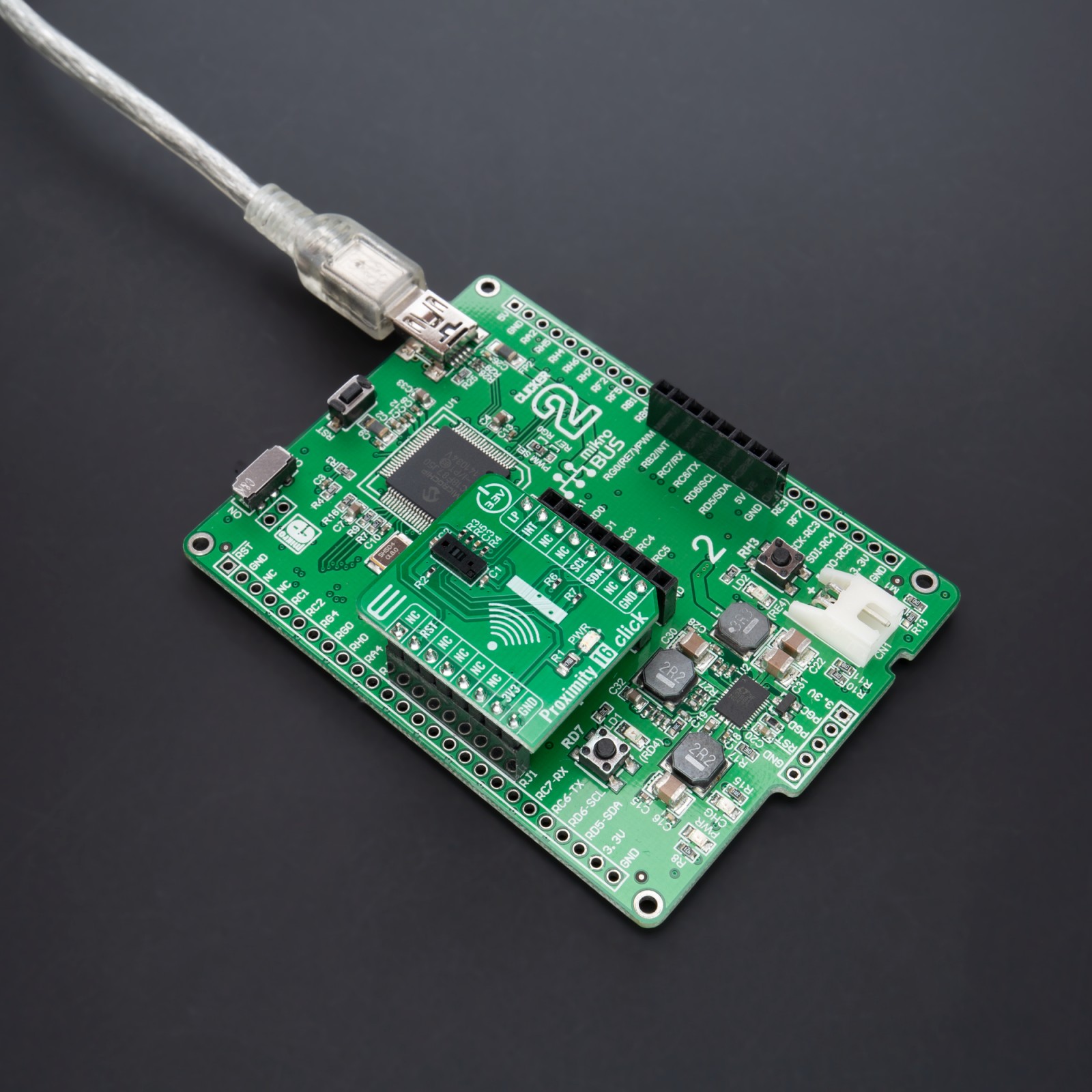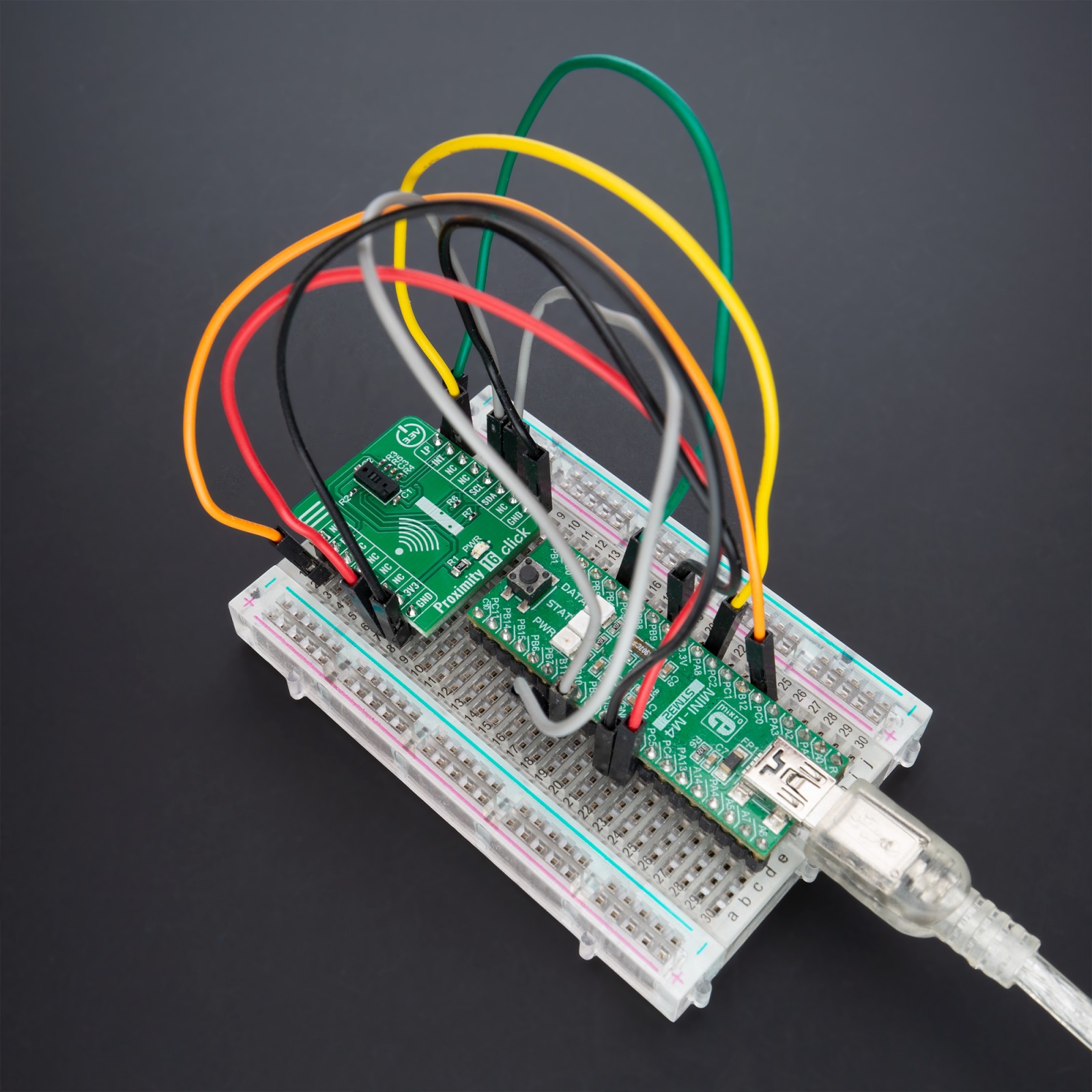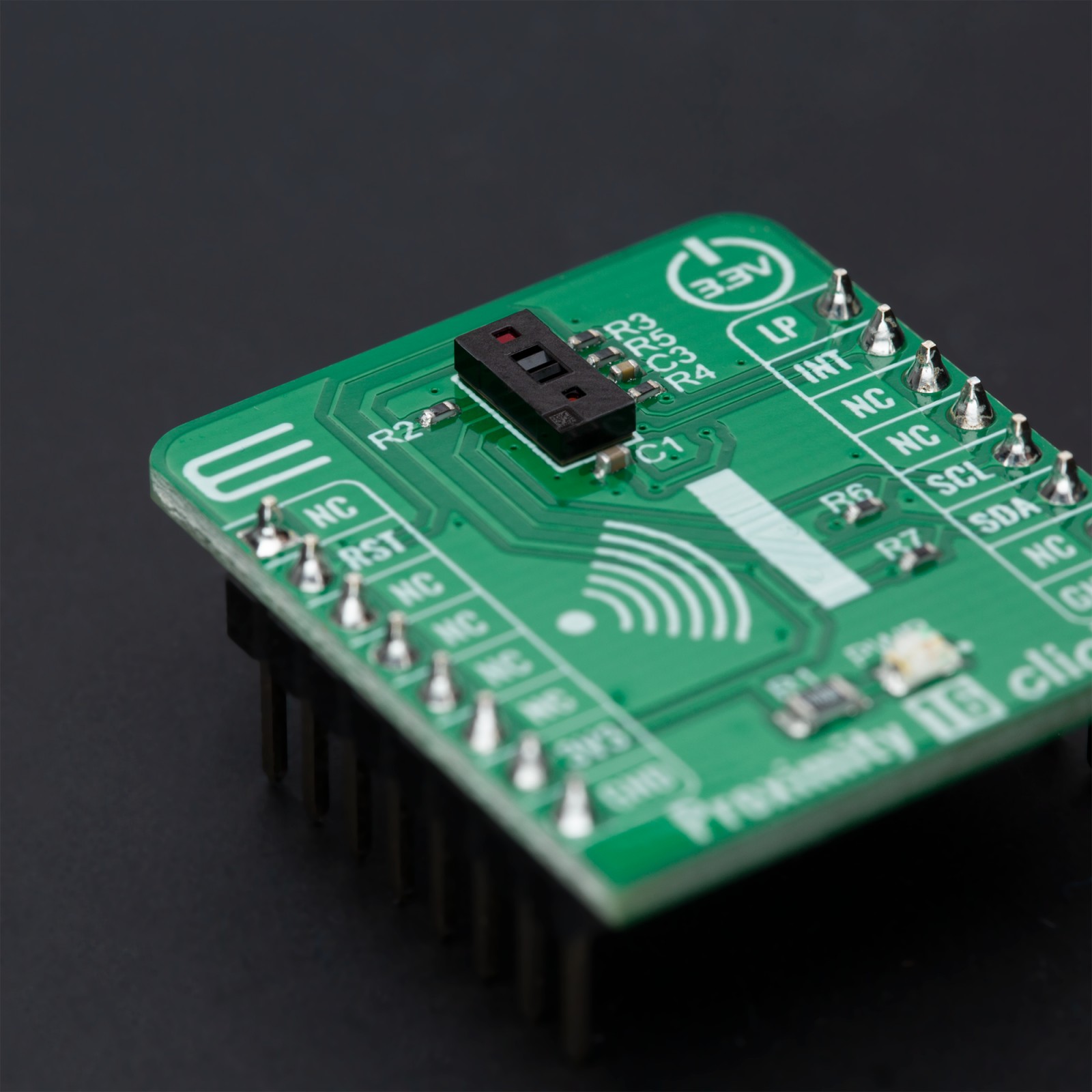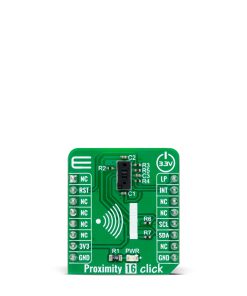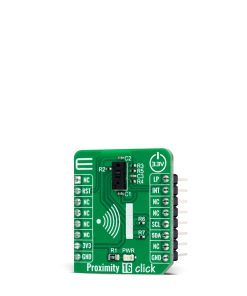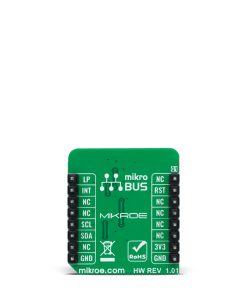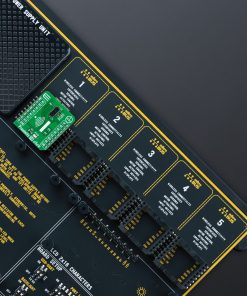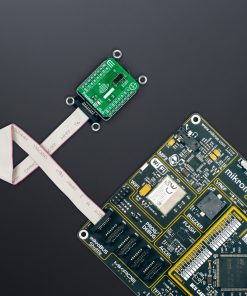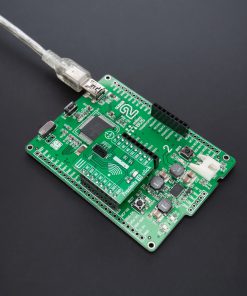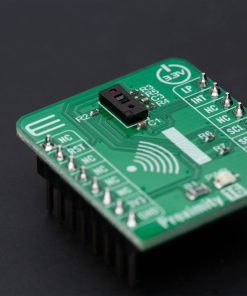Subtotal: R700.00
Proximity 16 Click
R645.00 ex. VAT
Proximity 16 Click is a compact add-on board that contains a close-range proximity sensing solution. This board features the VL53L5CX, a Time-of-Flight (ToF) multizone ranging sensor from STMicroelectronics. The VL53L5CX integrates a SPAD array, physical infrared filters, and diffractive optical elements (DOE) to achieve the best-ranging performance in various ambient lighting conditions with different cover glass materials. It allows absolute distance measurement, whatever the target color and reflectance, provides accurate ranging up to 400cm, and can work at fast speeds (60Hz). Also, multizone distance measurements are possible with either 4×4 or 8×8 separate zones with broad 63° diagonal software-configurable Field-of-View (FoV). This Click board™ is suitable for multizone and multi-object distance detection, content management, gesture recognition, and various consumer and industrial applications.
Proximity 16 Click is supported by a mikroSDK compliant library, which includes functions that simplify software development. This Click board™ comes as a fully tested product, ready to be used on a system equipped with the mikroBUS™ socket.
Stock: Lead-time applicable.
| 5+ | R612.75 |
| 10+ | R580.50 |
| 15+ | R548.25 |
| 20+ | R527.61 |

 DIGI POT Click
DIGI POT Click  Alcohol Click
Alcohol Click 
